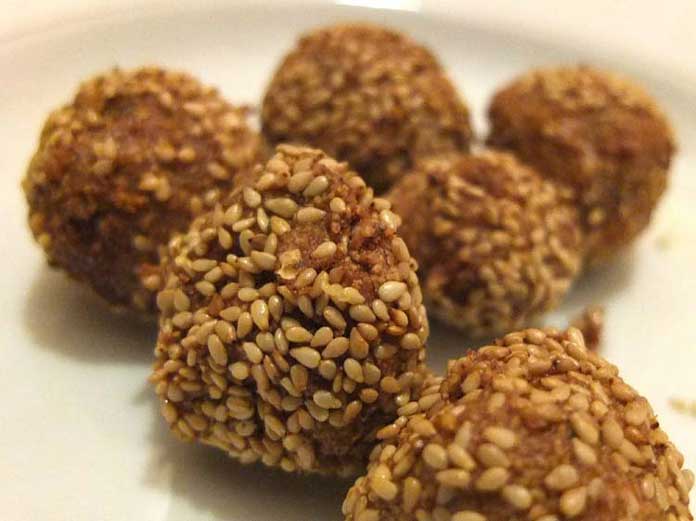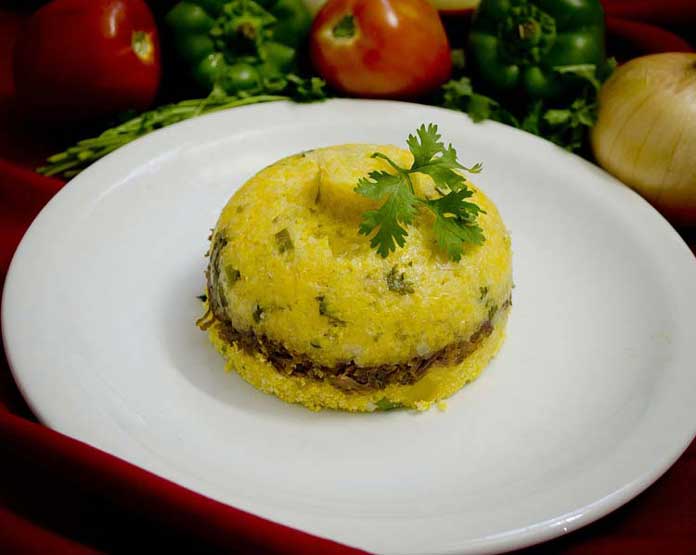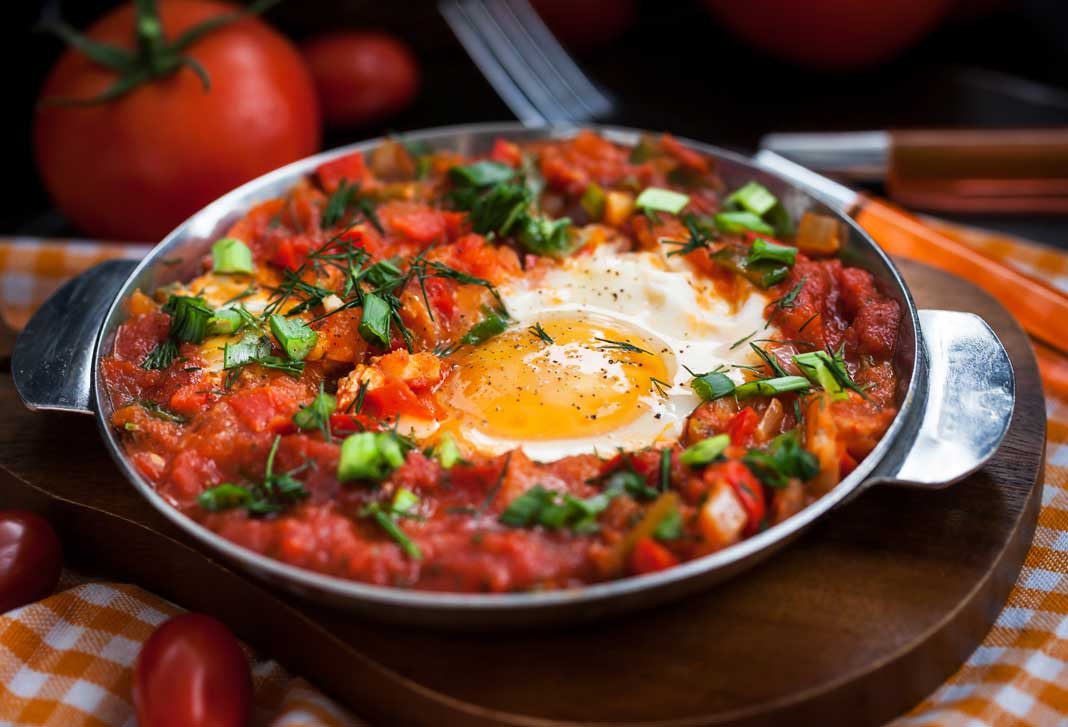Israel is a country located in the Middle East where the confluence of many cultures come together to shape a fascinating cuisine. The diverse population of Israel makes its traditional cuisine unique. Currently, people from more than seventy countries live in Israel, all having their different food customs. There are many authentic dishes of Israel that define traditional Israeli food. For each of the classic Israeli food, there are at least a few famous variations.
Israel’s culinary traditions comprise cooking methods and foods that span three thousand years of history. These traditions have been shaped over the time by influences from Europe, Africa, and Asia, as well as religious and ethnic influences. These various influences have resulted in an Israeli culinary melting pot.

Historic sources and archeological discoveries show that the food of the ancient Israelites was based on some products that still have an important place in modern Israeli cuisine. Among these products are dates, figs, olives, barley, wheat, pomegranates, and grapes. Due to the country’s position at the crossroads of the trade routes between east and west, the traditional Israeli diet based on locally grown produce was also enhanced by imported spices.
More definitely, “authentic” traditional Israeli food is more than just shawarma and falafel. Traditional Israeli food has adopted elements of various styles of regional Levantine cuisine and Jewish cuisine, particularly the Ashkenazi, Mizrahi, and Sephardic styles of cooking. Today, authentic Israeli cuisine incorporates many foods traditionally eaten in Mediterranean cuisines and Middle Eastern cuisine. Foods such as hummus, falafel, couscous, shakshouka, sabha, and za’atar are now widely favorite in the country.
Israeli traditional cuisine comprises dishes brought to Israel by Jews from the Diaspora as well as local dishes by people native to Israel. Israeli Jewish fusion cuisine has developed since the establishment of the State of Israel in the year 1948. Jew populations from Eastern European countries brought traditional Israeli food that they used to prepare in various countries such as Hungary, Austria, Romania, Poland, and Russia. On the other side, populations with Arab descent came to Israel with a cuisine adapted from the Middle East and North Africa.
Other influences on traditional Israeli food are the availability of products common to the Mediterranean region. Especially certain kinds of dairy products and fish, fruits and vegetables. The tradition of keeping kosher, the distinctive traditional dishes prepared at holiday times, and food customs specific to Shabbat and different Jewish holidays, such as jachnun, challah, malawach, hamin, sufganiyot, and gefilte fish. Over the years have also been introduced new dishes based on agricultural products such as avocados and oranges, and others based on world trends including elements of other international cuisines.
One traditional Israeli dish is called Ktzitzot Khubeza. This is dated from the War for Independence and is still consumed by Israelis today. The successive waves of immigrants have incorporated elements of their cuisines as well as a whole range of cooking styles and foods whence they came. For example, Russian Jews have brought with them herring and borsht, while immigrants arriving from central Europe brought foods such as strudels and schnitzel.
Ashkenazi traditional Israeli food includes dishes such as lox, shitztezel, chicken soup, geflite fish, chopped liver, kishka, knishes, and kugel. Cakes and pastries from central and Eastern Europe include nut spirals (schnecken), yeast cakes (babka), layered pastries, and chocolate rolls.
 Jews migrated from Iraq, Turkey, Yemen, and Kurdistan, and Mizrahi Jews from Morocco. Other countries from North Africa have also influenced the ingredients and cooking fashions of the country. The traditional cuisine of Jews from North Africa, the Mizrahi cuisine, shares many similarities with Arab cuisine. It features rice dishes, sweet and savory puff pastries, grilled meats, pita bread, stuffed vegetables, and salads. Other popular North African dishes in Israel include chraime, couscous, carrot salad, matbucha, and shakshouka. Yemenite traditional Israeli food includes skhung, malawach, jachnun, and kubane. Dishes with Iraqi influence include kubba, amba, sabich, sambusac, kebab, and pickled vegetables. Sephardic dishes have Turkish and Balkanic influences and include yogurt, burekas, and taramosalata.
Jews migrated from Iraq, Turkey, Yemen, and Kurdistan, and Mizrahi Jews from Morocco. Other countries from North Africa have also influenced the ingredients and cooking fashions of the country. The traditional cuisine of Jews from North Africa, the Mizrahi cuisine, shares many similarities with Arab cuisine. It features rice dishes, sweet and savory puff pastries, grilled meats, pita bread, stuffed vegetables, and salads. Other popular North African dishes in Israel include chraime, couscous, carrot salad, matbucha, and shakshouka. Yemenite traditional Israeli food includes skhung, malawach, jachnun, and kubane. Dishes with Iraqi influence include kubba, amba, sabich, sambusac, kebab, and pickled vegetables. Sephardic dishes have Turkish and Balkanic influences and include yogurt, burekas, and taramosalata.
Amongst this tremendous variety of cuisines in Israel, certain dishes are particularly considered typical traditional Israeli food. These recipes can be found in most of the Israeli homes and anywhere throughout the country, from food stands to restaurants and cafés. One of these traditional Jewish dishes is Malabi, a milk, and flour-based custard. Another one is Matbucha, a “Turkish salad” made of bell peppers, cooked tomatoes, onions, and garlic.





Israel’s culinary traditions comprise cooking methods and foods that span three thousand years of history. These traditions have been shaped over the time by influences from Europe, Africa, and Asia, as well as religious and ethnic influences. These various influences have resulted in an Israeli culinary melting pot.